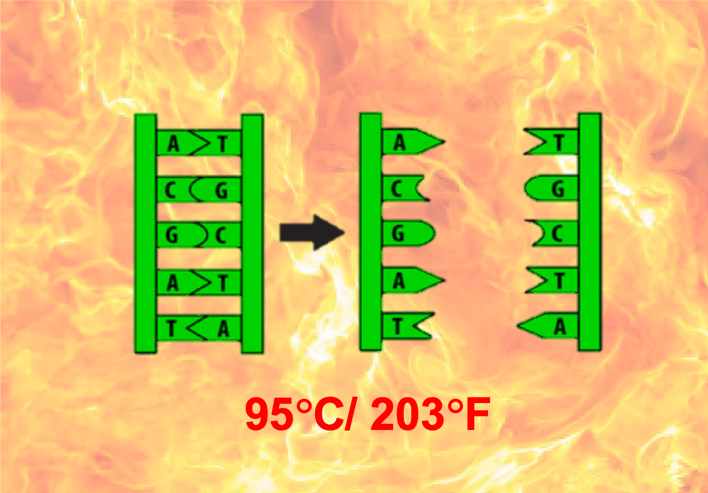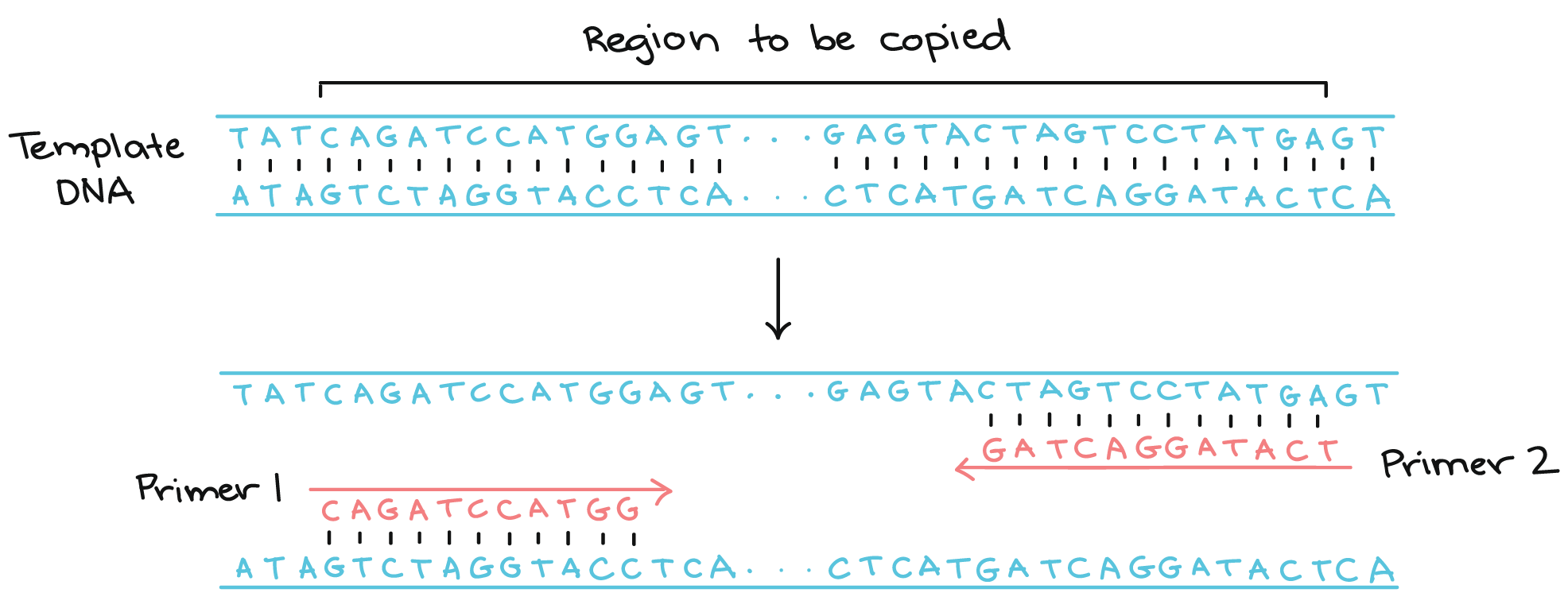Module 4: Polymerase Chain Reaction (PCR)
Module 4.2: Denaturation, Annealing, and Primer Extension
PCR Ingredients
Before starting the PCR reaction, there are 4 key ingredients for the reaction to take place.
-
Taq polymerase
Similar to DNA replication that occurs under normal biological conditions, the PCR requires a DNA polymerase to make the new strands of DNA. The polymerase that is used in the PCR reaction is called “taq polymerase”, as it was originally isolated from the heat-tolerant bacterium Thermus aquaticus that normally live in hot springs and hydrothermal vents. Because of its lifestyle, it is most active at a temperature around 70°C (158°F).
-
Primers
A primer is a short sequence of nucleotides that provides the starting point for the DNA polymerase (taq) to attach to. These primers are used to flank the region of the DNA that we want to be copied. These primers bind to the complementary strand of the DNA template. The primers are created artificially in a laboratory setting and added to your sample during the preparation process. This means that scientists and researchers must identify unique sections of the DNA code to create a specific primer for each disease.
-
Template DNA
This is the stand of DNA the taq polymerase is going to use for amplification
-
Nucleotides
Free nucleotides are added to the sample for the polymerase to use to synthesize the new strand of DNA aka the building blocks of the reaction.
PCR: 3 basic steps
Denaturation
In vitro, we cannot replicate all of the biological intricacies that occur in the nucleus of a cell, however, we do know that under extreme heat, that the double helix will break apart. Therefore, the first step of the PCR reaction is to subject the DNA to extreme heat (95°C/ 203°F) to break apart the two strands forming the template DNA.

Annealing
Now that we have successfully denatured the DNA, the temperature is too high for the primers to attach the DNA template so the reaction is cooled down to temperatures between 55-65°C (131-149°F).

Primer extension
Once the primers have attached to the DNA template we are now ready for the taq polymerase to attach and begin adding nucleotides to create a new double-stranded piece of DNA. As mentioned above the taq polymerase is active at temperatures around 70°C (158°F), so the reaction is heated from 55-65°C to 70°C to allow activation of the taq polymerase.

These 3 steps together make up a PCR single cycle. Therefore, at the end of a single cycle, if we started with one double strand of DNA in a sample we will end up with two at the end of the cycle, doubling the number of DNA strands we began with.

In a typical PCR reaction, the cycle is repeated 25-40 times and takes approximately 2-4 hours, depending on the length of DNA needing to be copied (see image below). The reason for this is that after the first cycle, it is no longer only the original DNA template that is being used for amplification, but also the new strands that are used in the reaction too. Additionally, we do not just add one taq polymerase or primer to the sample, we add several to float around the reaction, so the number of DNA molecules can roughly double with each round of cycling.


